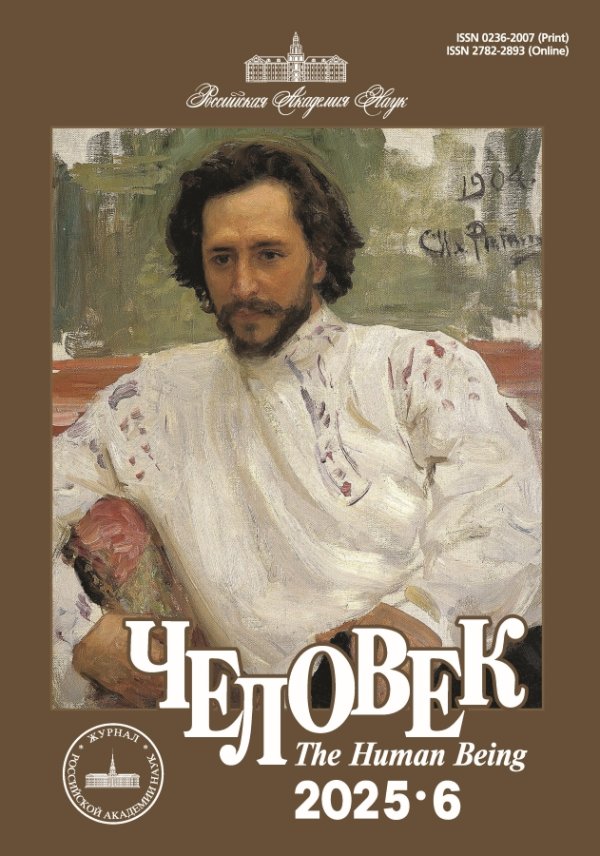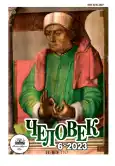To Include or to Exclude? The Problem of the Observer in Cultural and Analytical Anthropology
- Authors: Gasilin A.V.1
-
Affiliations:
- Institute of Scientific Information on Social Sciences of the Russian Academy of Sciences
- Issue: Vol 34, No 6 (2023)
- Pages: 7-27
- Section: The philosophy of the himan being
- URL: https://journals.rcsi.science/0236-2007/article/view/251302
- DOI: https://doi.org/10.31857/S023620070029302-9
- ID: 251302
Full Text
Abstract
About the authors
Andrey Viktorovich Gasilin
Institute of Scientific Information on Social Sciences of the Russian Academy of Sciences
ORCID iD: 0000-0003-2271-0399
51/21, Nakhimovsky prospect, Moscow 117418, Russian Federation
References
- Гасилин А.В. Метод Подороги. Окулярная аналитика и мгновение письма // Человек. 2021. Т. 32, № 5. С. 84–102.
- Концептуальные структуры // Новая философская энциклопедия. М.: Мысль, 2010 [Электронный ресурс]. URL: https://iphlib.ru/library/collection/newphilenc/document/HASH01e906864d3e116cfed6f1e8 (дата обращения: 01.10.2023).
- Кэролл Л. Приключения Алисы в стране чудес. Сквозь зеркало и что там увидела Алиса, или Алиса в Зазеркалье: пер. с англ. М.: Наука, 1990.
- Малиновский Б. Научные принципы и методы исследования культурного изменения // Антологии исследований культуры. Интерпретация культуры. СПб.: Центр гуманитарных инициатив, 2008. С. 371–384.
- Подорога В.А. Антропограммы. Опыт самокритики: с приложением дискуссии. СПб.: Изд-во Европейского ун-та в Санкт-Петербурге, 2017a.
- Подорога В.А. Время чтения. М.: «Канон+» РООИ, «Реабилитация», 2021a.
- Подорога В.А. Второй экран. Сергей Эйзенштейн и кинематограф насилия. Т. 1. Зеркальная подпорка. Материалы к психобиографии. М.: BREUS, 2017b.
- Подорога В.А. Второй экран. Сергей Эйзенштейн и кинематограф насилия. Т. 2. Прототело. Фрагменты визуальной антропологии. М.: BREUS, 2020a.
- Подорога В.А. Метафизика ландшафта. Коммуникативные стратегии в философской культуре XIX–XX веков. М.: «Канон+», РООИ «Реабилитация», 2021b.
- Подорога В.А. Мимесис. Материалы по аналитической антропологии литературы. Т. 1. Н. Гоголь, Ф. Достоевский. М.: Культурная революция, Логос, Logos-altera, 2006.
- Подорога В.А. Мимесис. Материалы по аналитической антропологии литературы в двух томах. Т. 2. Часть I. Идея произведения. Experimentum crucis в литературе XX века. А. Белый, А. Платонов, группа Обэриу. М.: Культурная революция, 2011.
- Подорога В.А. Парабола. Франц Кафка и конструкция сновидения. Аналитическая антропология литературы. М.: Культурная революция, 2020b.
- Foucault M. L'Herméneutique du sujet. Paris: Gallimard, 2001.
- Malinowski B. A Diary in the Strict Sense of the Term. London: The Athlone Press, 1989.
- Thompson Hunter S. Hell`s Angels. : The Strange and Terrible Saga of the Outlaw Motorcycle Gangs. New York: Random House, 1999.
- Viveiros De Castro E. Métaphysiques cannibales. Lignes d’anthropologie post-structurale. Paris: Presses Universitaires de France, 2009.










